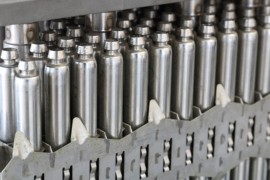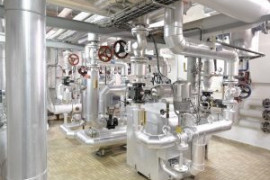The system of certificates for energy saving heating networks (CEE), introduced in France under the POPE law of 13 July 2005 in the context of the implementation of the Kyoto Protocol, aims to achieve energy savings in many sectors such as in construction, industry, agriculture, transport … This effort also impacts on heating networks, which have also been encouraged by the ESC system to reduce their environmental impact. Explanation.
How do the certificates of energy savings for heating networks (CEE) work?
Certificates for energy savings, or CEE – or “white certificate” – is a device that is one of the leading instruments of controlling energy demand policy in France. POPE introduced by the law adopted in 2005, based on an obligation to achieve energy savings, state imposed on energy sellers (electricity, gas, heat, cold, heating oil, or, more recently, automotive fuels) called “forced”. This allows governments to encourage them to actively promote energy efficiency among their customers, be they households, local authorities or professionals of the service sector and industrial sites.
Three periods of three years
The energy saving certificates of heat networks device works by three years:
– From mid-2006 to mid-2009 for the first period (followed by a transitional period between mid-2009 and late 2010);
– From early 2011 to the end of 2013 for the second period;
– From 2015 to 2017 for the third period.
Regarding the latter, the goal was set at 220 TWh per year cumac (EEC measurement unit, “cumac” from the contraction of “cumulative” and “discounted” because the kWh is reduced to the length of life of the product and updated the market), against 115 TWh per year cumac for the second period.
The energy saving certificates operate in a market system: every person – physical or moral (associations, communities, businesses …) – that achieves energy savings is issued a number of certificates, based on kWh saved. It can then sell them to vendors. The proceeds from this sale is then refunded to businesses and communities.
Heating networks concerned by the Energy Saving Certificates
By their mobilizing capacity of renewable energy – and the importance of the potential gain in terms of energy savings for consumers! – Heating networks were obviously integrated device certificates for energy savings. Several operations are eligible for obtaining EEC:
– The connection of a residential building in a heat network powered by renewable energy;
– The connection of a commercial building with a heating network powered by renewable energy;
– Renewable heat production network;
– Injection of foam insulation in a heat duct network;
– The rehabilitation of a heat supply station in a commercial building, large or not;
– The rehabilitation of a heat supply station in a residential building;
– The passage of a low temperature heating system;
– Strengthening the insulation of the pipes of a gutter heating network.
In all cases, these operations must be verified and accompanied by a company specializing in energy savings. It is she who will be responsible for forwarding the supporting work of the ERC National Pole.
The implementation of the device certificates for energy savings in the heating systems sector implies for operators to comply with new energy standards and seek innovative solutions to reduce their environmental impact. Still, it is an effective incentive, which has been proven in many countries!








